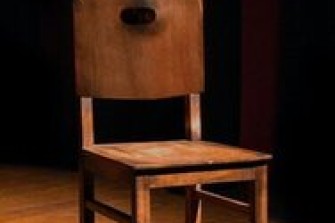The book was born of frustration after a string of bad board meetings. Why did some go off track? It wasn’t necessarily the people or the subject matter, the venue or even the catering. It was, in fact, the frequency of bad chairing that gave traction to the writing.
Hayward opens with real-life war stories, some anonymous and some more public (Boeing). They are salutary and will resonate with most directors. He outlines contributions from some key governance thinkers and reports (Adrian Cadbury, Mervyn King, Peter Dey) and looks at the now decreasing tendency in the US (although still sitting at 50 percent) to combine the roles of CEO and chair.[1] He notes that there is “a major sustained trend to perform the surgery and separate the Siamese twins of chair and CEO” and that “most people now consider the best practice to be a split of roles”.
The opening section concludes that chairing has ceased to be an adjunct or parttime function but is now a role in and of itself. How do you find a great board? Jim Gillies’[2] reply: Find a great chair.
Citing excellent advice from David Beatty[3] and Stanislav Shekshnia,[4] Hayward develops the analogy of the chair with four legs: Composer and Maestro—creating the score (agenda) and conducting the meeting; Mediator—the formal skills needed to create consensus; Coach and Counsellor—less about traditional leadership and more about personal influence among peers, based on a foundation of trust. Finally Mindful and Mindless Mentor—active, open attention in the present…but not always. The brain needs a break and unconscious processes also need to be applied.
Shekshnia’s article is cited again with some useful guidance for all chairs: 5-8 agenda items only; chair’s airtime in the meeting 5-10% only; management presentations up to 15% of board time; and annual working time for a chair, 25 days.
Hayward gives us the WAIT acronym, useful for any director and especially the chair: Why Am I Talking? He also outlines a helpful four-level decision model from one (housekeeping) to four (mission-critical, highly complex, ‘bet the farm’ issues), and sets out how a board should deal with each.
For the big calls, as chair, he polls each director—not for their opinion but to ask what information they need to help make a decision. Management are given direction and the board has what it needs on the day.
There is an excellent short section of what he calls the Fab Four deadly sins:
- Confirmation Sin: seeking information to confirm existing beliefs
- Bandwagon Sin: desire to be inside the group, a lack of adequate challenge
- Authority Sin: reliance on authority figures, causing people to self-censor
- Dunning Kruger Sin: The work of Cornell’s Justin Kruger and David Dunning demonstrates how people misjudge their own skills. The lower the competence, the more inflated the self-assessment, the gap closing until the truly expert tend to slightly underestimate their skills. Hayward describes this as the ‘fabbest’ of the Fab Four and suggests this has “the greatest potential to contribute to major organisational failures or mistakes”. He even slips in a Forrest Gump quote: “Stupid is as stupid does”.
The good chair is aware of these human failings. Aside from getting good people around the table in the first instance, the chair ensures contributions from all, provides development opportunities and insists on periodic assessment.
Hayward outlines some of the other major bias traps a great chair will try and avoid, including:
- action bias – must do something now
- anchoring bias – locking on an arbitrary piece of information
- conservatism bias – clinging to existing beliefs and points of view
- framing bias – a real issue in boardrooms where a senior director or chair speaks first and emphatically
- Ikea bias – don’t play with what ain’t broke
- false causality – falsely linking two pieces of data.
These areas can be explored further in the work of Daniel Kahneman.[5]
The book is recent enough to have an epilogue reflecting on the time of Covid and how boards prepare and respond to so called ‘black swan’ events. This section includes a wonderful quote from Lenin: “There are decades where nothing happens and weeks where decades happen”, and a wry Warren Buffet observation: “You only find out who is swimming naked when the tide goes out”.
The book is full of humour and anecdote, poking fun where deserved. Some may find the coaching section a bit long. But everything is well summarised, and the appendices have great questions and check lists. The first appendix gives us Hayward’s whole book of wisdom neatly summarised in two pages. Entitled The Great Chair check list, it has three headings:
- What we discuss – creating the agenda
- How we talk and make decisions
- Cultivating professionalism.
If you like your governance reading to embrace Paul McCartney, Kalahari bushmen, Dizzy Gillespie, Proust, Salvador Dali, Einstein and Buddhist parables—this is the book for you.
[1] Standard and Poors 500 companies. ISS Analytics 2018
[2] Dean Emeritus at the York University Schulich School of Business
[3] Dean of the Rotman School of University of Toronto in his September 2016 blog, ‘The Role of the Board Chair’
[4] Harvard Business Review Spring 2018, ‘How to be a Good Board Chair’
[5] Kahneman, D. Thinking Fast and Slow. (2011) Farrar, Straus and Giroux








